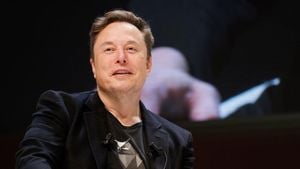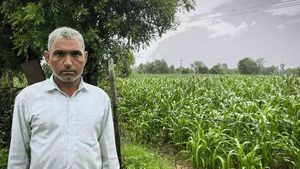Imagine wandering through the grasslands of Wyoming and catching sight of the elusive black-footed ferret. Once thought to be long gone, this adorable creature is now being rescued from the grips of extinction. The miracle of modern science has made it possible to clone and breed these ferrets, sparking hope for other endangered species as well.
Only forty years ago, the black-footed ferret was believed to be extinct, with conservationists fighting against time to save any remaining populations. A mere 18 ferrets were discovered hiding away, prompting the establishment of breeding programs. These programs, fueled by passionate scientists and conservationists, have become beacons of hope, leading to the birth of clones from the last wild survivors.
The latest success story revolves around Antonia, the first cloned black-footed ferret who made headlines with the birth of her two pups. Cloned from Willa, who passed away at the San Diego Zoo back in 1988, Antonia presents new opportunities for genetic diversity within her species. This is not just another feel-good story—it's pivotal for shaping the future of this endangered species.
Genetic diversity is key for long-term recovery, as Antonia has inherited unique genetic variations, potentially three times more than her wild counterparts. These variations are critically important because they help combat the low genetic diversity prevalent among the existing population of around 350 black-footed ferrets.
"Introducing these previously unrepresented genes could play a key role in increasing the species' genetic diversity, which is absolutely necessary for healthy, long-term recovery," noted the U.S. Fish and Wildlife Service (FWS) in their recent announcement. The birth of Antonia's cubs offers encouraging prospects, but does it signal success for conservation cloning?
This achievement highlights years of expensive research and global collaborations involving entities such as the Smithsonian National Zoo and Conservation Biology Institute, Revive & Restore, and San Diego Zoo Wildlife Alliance. Yet as exciting as cloning is for the significance it brings to genetic diversity, experts remind us it’s not all rainbows and sunshine.
The real challenge lies beyond cloning; it's about reintroduction and ensuring these species can co-exist with their environment. The reality is harsh—animal habitats are vanishing due to human impact and conflict, and without proper habitats, any cloned species could still face doom.
David Jachowski, a wildlife ecologist, made it clear: "What is clear is conservation cloning alone cannot save endangered species... Only when we restore and secure adequate habitat and reduce the potential for human-wildlife conflict will these species ever be recovered in the wild." To simply clone animals may lead to their ultimate failure if they cannot thrive back home.
This perspective resonates even more when discussing the potential revival of other extinct species, like the wooly mammoth or the thylacine, commonly known as the Tasmanian tiger. These lofty ambitions could easily veer off course if the conditions needed for their survival are absent. Restoring habitats is not only necessary for the black-footed ferret but also for any future endeavors involving cloning extinct creatures.
New technologies raise hopes for the revival of long-lost species, underscoring our capacity to conquer extinction thanks to breakthroughs like CRISPR and advanced genomic tools. While news about cloning and potential de-extinction stirs excitement, practical concerns loom larger than life: are we ready to prioritize and tackle the environmental challenges contributing to species loss?
Interestingly, the cloning advances with the ferrets have reignited discussions about bioethics and the responsibilities involved with manipulating life. The broader question presents itself: does human intervention guarantee success, or does it pose new ethical dilemmas?
It's not all about the cloning lab; the situation necessitates discussions about ecosystem health and environmental awareness. Conservationists urge simultaneous efforts to safeguard existing habitats, create wildlife corridors, and eliminate human-wildlife conflict to make it pointlessly complex both for clones and their naturally occurring relatives.
For now, all eyes are on Antonia and her cubs. Will they survive the transition back to their natural habitat, which is fraught with challenges due to habitat loss? The next steps will determine if science can navigate through the tangled web of extinction and species revival. Each revolutionary breakthrough draws excitement, but conservations strategies remain of utmost importance.
The movement to protect the black-footed ferrets and potentially revive other endangered creatures is pushing us to rethink our approach toward conservation. The juxtaposition of cutting-edge science and deep-rooted environmental practices might hold the answer to keeping our planet’s biodiversity alive and well.
With advances like cloning leading the charge, one can only hope we strike the right balance between scientific ambition and environmental stewardship. To bring about real change, existing habitats must be preserved and the decreasing trend of wildlife loss must stop before we lose the battle against extinction.



